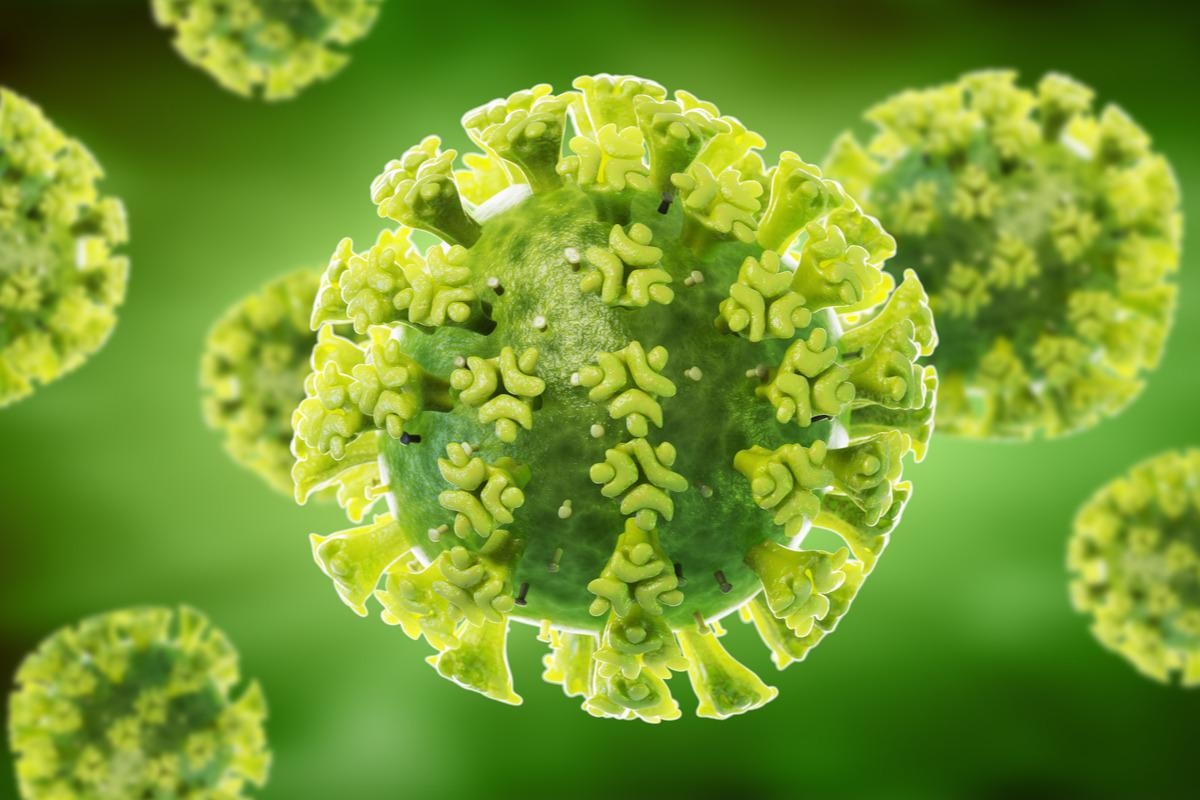In a recent study posted to the bioRxiv* preprint server, researchers designed nanoparticles representing receptor-binding domains (RBDs) of the spike (S) protein of animal sarbecoviruses and severe acute respiratory syndrome coronavirus 2 (SARS-CoV-2) to evaluate their potential as a pan-sarbecovirus vaccine candidate.

Background
They compared the immune responses elicited by homotypic (containing only SARS-CoV-2 RBD) and mosaic-8 (having RBDs of SARS-CoV-2 and seven animal sarbecoviruses) RBD-nanoparticles against conserved epitopes of SARS-CoV-2 and sarbecoviruses in the transgenic K18-hACE2 mice.
SARS and SARS-CoV-2, both belonging to the sarbecovirus lineage, have caused epidemics in humans in the past 20 years. Researchers have also identified many other sarbecoviruses in bats, some of which bind the human angiotensin-converting enzyme 2 (hACE2) receptor, just as SARS and SARS-CoV-2, raising concerns regarding another coronavirus pandemic. In such times, there is an urgent need for vaccines and therapeutics that combat all SARS-CoV-2 variants of concern (VOCs) and zoonotic sarbecoviruses.
About the study
In the present study, researchers attached RBDs from the SARS-CoV-2 Beta VOC and seven animal sarbecoviruses (clades 1, 2, and 3) to a 60-mer protein nanoparticle, a design favoring interactions with B cell receptors that could crosslink between adjacent RBDs to preferentially recognize conserved class 3, class 4, and class 1/4 RBD epitopes.
When the RBD of a strain is present on the mosaic-8b nanoparticles, the researchers considered the immune response elicited against that particular strain as matched; however, they considered strains that did not have RBDs represented on mosaic-8b mismatched in the immunological assays and animal challenge experiments.
The team selected SARS as a mismatched strain for all three nanoparticle immunogens. Further, they used homotypic SARS-2 Beta RBD-mi3 and two versions of mosaic-8 nanoparticles for experiments:
i) mosaic-8b RBD-mi3 (SARS-CoV-2 Beta RBD and seven animal sarbecovirus RBDs) and
ii) mosaic-8gm (mosaic-8 with a Wuhan-Hu-1 SARS-CoV-2 RBD plus the seven sarbecovirus RBDs).
They first primed the K18-hACE2 mice with the mosaic-8b, mosaic-8gm, or homotypic SARS-2 Beta nanoparticles; boosted them four weeks later. Finally, after 14 days, the researchers performed enzyme-linked immunosorbent assays (ELISA) for estimating antibody titers in the sera of the test animals.
Next, the team challenged ten immunized K18-hACE2 mice with the SARS-CoV-2 Beta or SARS. They euthanized four mice per group four days post-challenge for the viral load analysis and monitored the remaining six for survival up to 28 days. In particular, they evaluated mice in each group for weight loss, survival, and genomic and subgenomic ribonucleic acid (RNA) levels. Additionally, they monitored the infectious viral titers in the lung tissue and oropharyngeal swabs.
They used the reverse transcription-polymerase chain reaction (RT-PCR) test for estimating viral RNA copies in the lung tissue and oropharyngeal swabs. In RT-PCR, subgenomic RNA copy numbers reflect infectious viral titers.
Study findings
Although all three versions of RBD-nanoparticles (immunogens) elicited high neutralizing antibody titers, ELISA titers against the Wuhan-Hu-1 RBD and S-6P were moderately higher for homotypic SARS-CoV-2 Beta immunized mice than the mosaic-8b, and mosaic-8gm immunized mice.
As indicated by relative weight loss, the mosaic-8b and homotypic SARS-CoV-2 Beta RBD-mi3 nanoparticles fully protected against the SARS-CoV-2 challenge, while some animals of the mosaic-8gm group experienced transient weight loss but all except one recovered in 10 days post-viral challenge.
All the animals belonging to the mosaic-8b and homotypic immunized groups survived, while only ~83% of the animals in the mosaic-8gm immunization group survived the SARS-CoV-2 Beta challenge. Despite eliciting low neutralization titers against SARS-CoV-2, immunization with the mosaic-8b RBD-mi3 provided 100% protection against both matched (SARS-CoV-2 Beta) and mismatched (SARS) challenges in the K18-hACE2 mouse model.
Immunization with the mosaic-8b and homotypic nanoparticles suppressed viral replication in mice lungs challenged with SARS-CoV-2 Beta; however, infectious viral particles in the lungs of the mosaic-8gm immunized animals were similar to the control immunized mice. The infectious viral load of SARS-CoV-2 Beta was lower in the mosaic-8gm immunized mice, suggesting partial protection in these animals.
On the contrary, all the vaccinated animals had no infectious SARS particles in their lungs compared to the control immunized mice. Only the mosaic-8b and mosaic-8gm-immunized animals showed the absence of infectious SARS in their oropharyngeal swabs. In both SARS and SARS-CoV-2 challenges, control animals immunized with unconjugated mi3 died within four to six days.
Conclusions
The mosaic-8b contained 1/8 SARS-CoV-2 RBDs as its homotypic SARS-CoV-2 counterpart. Yet, it elicited an adequate immune response against both a matched SARS-CoV-2 variant and a mismatched variant during the SARS-CoV-2 challenge in mice. Importantly, the mosaic-8b also protected the K18-hACE2 mice against a lethal mismatched variant during the SARS challenge, suggesting that this vaccine could offer protection against yet to emerge zoonotic sarbecoviruses that could infect humans.
Notably, even the homotypic SARS-2 RBD-mi3 nanoparticles reduced the viral loads of SARS in lung tissue obtained from the immunized animals compared to the control animals. Consequently, only one of the four animals had detectable viral loads in the lungs, thus demonstrating that it helped attain some immune protection.
*Important notice
bioRxiv publishes preliminary scientific reports that are not peer-reviewed and, therefore, should not be regarded as conclusive, guide clinical practice/health-related behavior, or treated as established information.
- Cohen, A. et al. (2022) "Mosaic RBD nanoparticles protect against multiple sarbecovirus challenges in animal models". bioRxiv. doi: 10.1101/2022.03.25.485875. https://www.biorxiv.org/content/10.1101/2022.03.25.485875v1
Posted in: Medical Science News | Medical Research News | Disease/Infection News
Tags: Angiotensin, Angiotensin-Converting Enzyme 2, Antibody, B Cell, Cell, Coronavirus, Coronavirus Disease COVID-19, Enzyme, Genomic, Immune Response, Immunization, Lungs, Mouse Model, Nanoparticle, Nanoparticles, Pandemic, Polymerase, Polymerase Chain Reaction, Protein, Receptor, Respiratory, Ribonucleic Acid, RNA, SARS, SARS-CoV-2, Severe Acute Respiratory, Severe Acute Respiratory Syndrome, Syndrome, Therapeutics, Transcription, Transgenic, Vaccine, Weight Loss

Written by
Neha Mathur
Neha is a digital marketing professional based in Gurugram, India. She has a Master’s degree from the University of Rajasthan with a specialization in Biotechnology in 2008. She has experience in pre-clinical research as part of her research project in The Department of Toxicology at the prestigious Central Drug Research Institute (CDRI), Lucknow, India. She also holds a certification in C++ programming.
Source: Read Full Article


